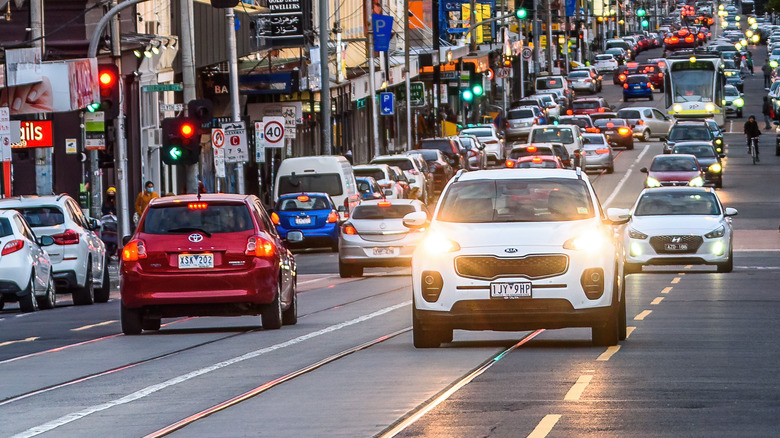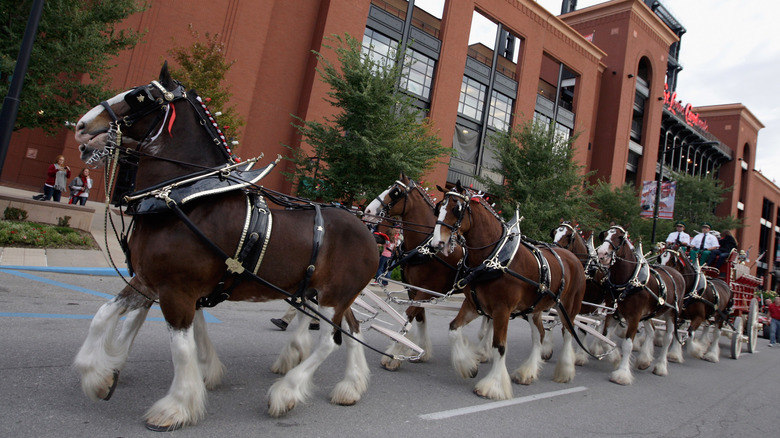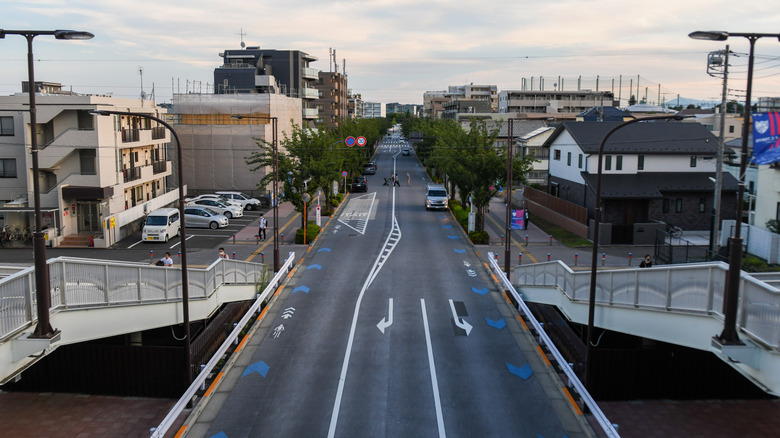The Biggest Theories On Why Countries Drive On Different Sides Of The Road
Large swaths of the world, including almost all of North and South America and a huge chunk of Africa, drive on the right side of the road. A smaller chunk of the globe is devoted to countries that drive on the left. These include the United Kingdom, Australia, New Zealand, and also large portions of Africa – all places that were once a part of the British Empire. However, a few places in which Britain has had little to no presence, such as Japan, also drive on the left.
There is probably no measurable difference in safety in driving on the left vs. driving on the right, according to Advanced Drivers, so there's no right or wrong side of the road to drive on. Rather, the reasons for driving on the left vs. on the right are varied and have to do with culture, landscape, geography, history, and inertia.
Grab your sword
According to Historic UK, horse-mounted travelers in Europe would pass each other on their respective left sides, while greeting each other with their right hands (as pictured above). If you were traveling on horseback, and someone was approaching you from the other direction, it made sense to pass them on the left. That's because, if it came down to it, you could grab your sword and set about defending yourself (assuming you were right-handed). This business of passing on the left was basically written into law, in a manner of speaking, in A.D. 1300, when Pope Boniface VIII decreed that pilgrims on their way to Rome should stick to the left side while on the roads.
When motor vehicles became a thing a few centuries later, the practice of keeping to the left endured, at least in the United Kingdom and in countries which were still part of its empire.
Large-scale commerce drove the switch
Driving on the left side of the road (and here "driving" refers to managing a horse or a team of horses) worked just fine for centuries — until it didn't. According to Historic UK, in France in the late-1700s, individuals began using teams of horses to move large amounts of cargo. By necessity, the driver of the team would generally sit on the left-rear horse, allowing him the use of his right hand to manage the whips and steering. From there, the custom emerged of passing each other on the right. Across the English Channel, however, where land was in shorter supply, teams of draft horses were considerably less common, and the practice of keeping to the left endured.
By the middle of the 1800s, the UK and France each had their own systems for road travel. What's more, each country was involved in colonialism, meaning that their driving habits (and, later, laws) would inform how other countries eventually enacted their own left-side vs. right-side driving laws. The United States, though once a British colony, took a page out of France's book since it had plenty of space to drive teams of horses. Then, in 1792, the state of Pennsylvania passed the first law to keep drivers on the right in the US (per Hisoric UK).
Countries switched sides
Not every country in the world developed its own driving patterns and laws organically or on orders from its colonial governors. Throughout history, many countries have switched the side of the road on which they drive. Canada, Poland, and Spain all drove on the left until 1924 with Brazil and Portugal switching in 1928 (per Wired). According to Auto Week, Sweden made everyone switch from the left to the right on September 3 in 1967. Now, however, the turmoil of which side to drive on is pretty much over, with countries sticking to their side, as pictured above, with those in red now driving on the right side.
In the midst of all of this is the matter of which side of the car to place the steering wheel. In most countries that drive on the left, the steering wheel is on the right, and vice-versa. However, that is not universally true. For example, traffic still drives on the left in the United States Virgin Islands – the only place under U.S. jurisdiction in which traffic drives on the left (via VInow). But, because cars sold to Virgin Islanders are generally manufactured for the American market, the steering wheels are also on the left, making driving around the US Virgin Islands quite tricky for some tourists.



